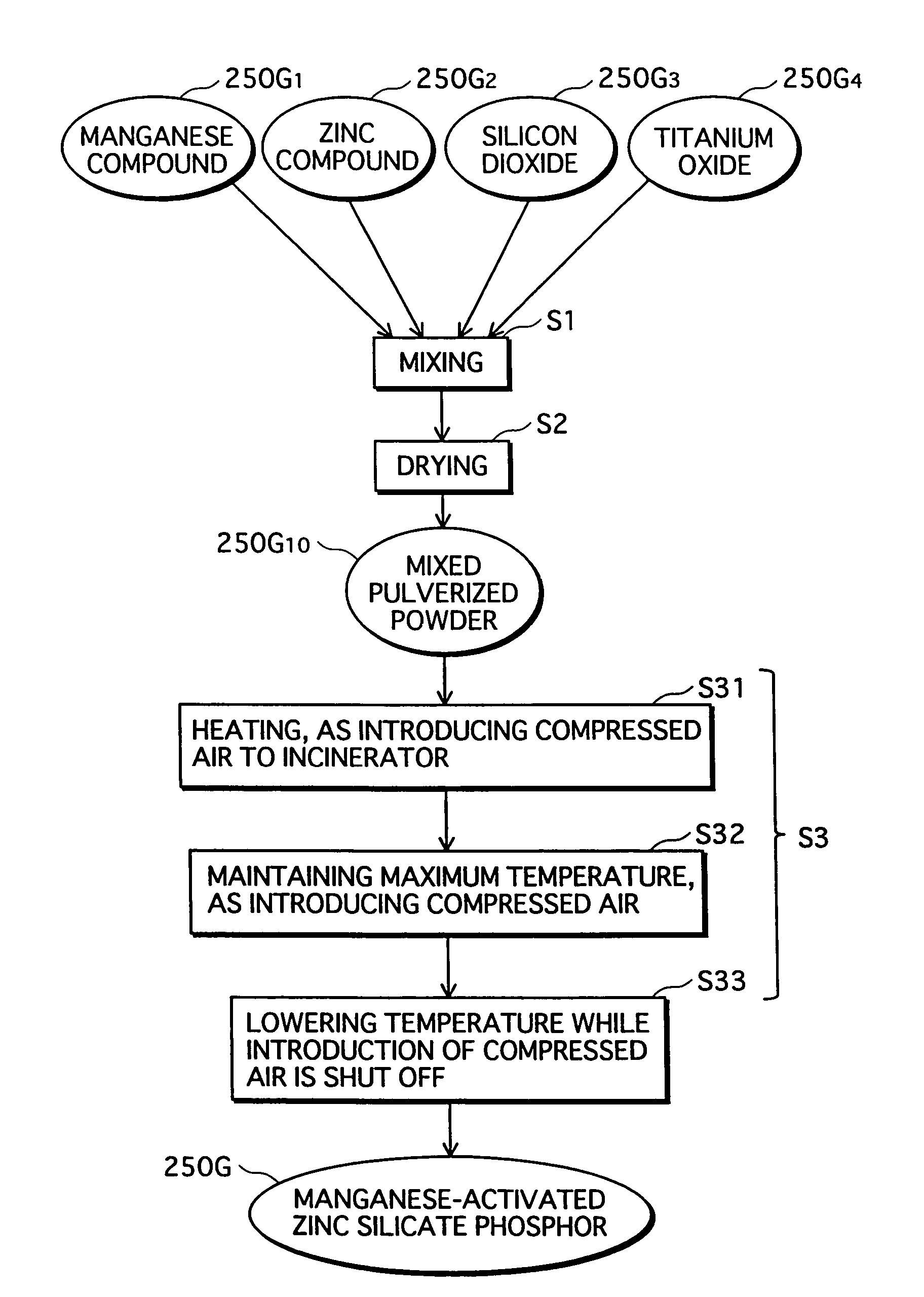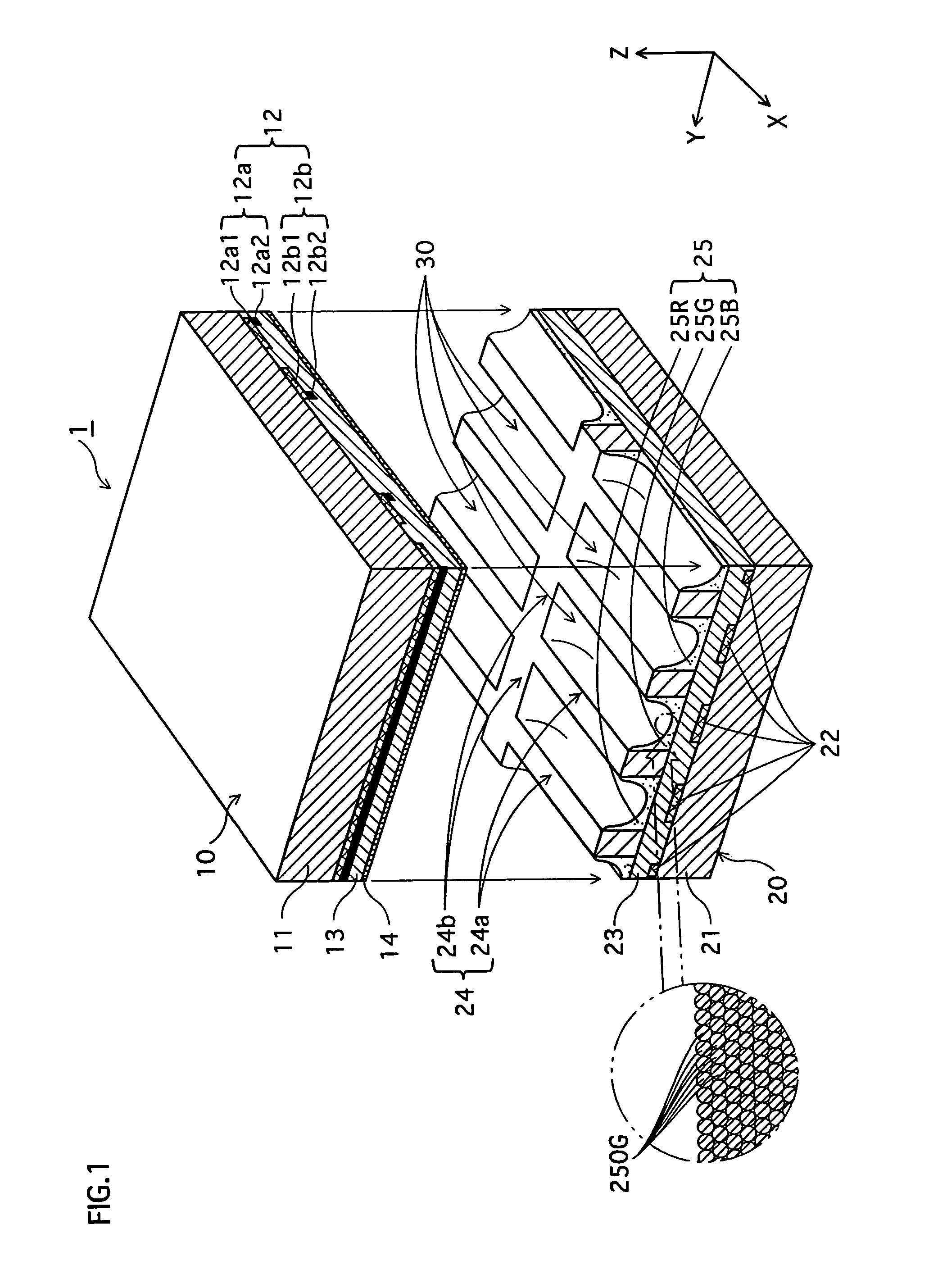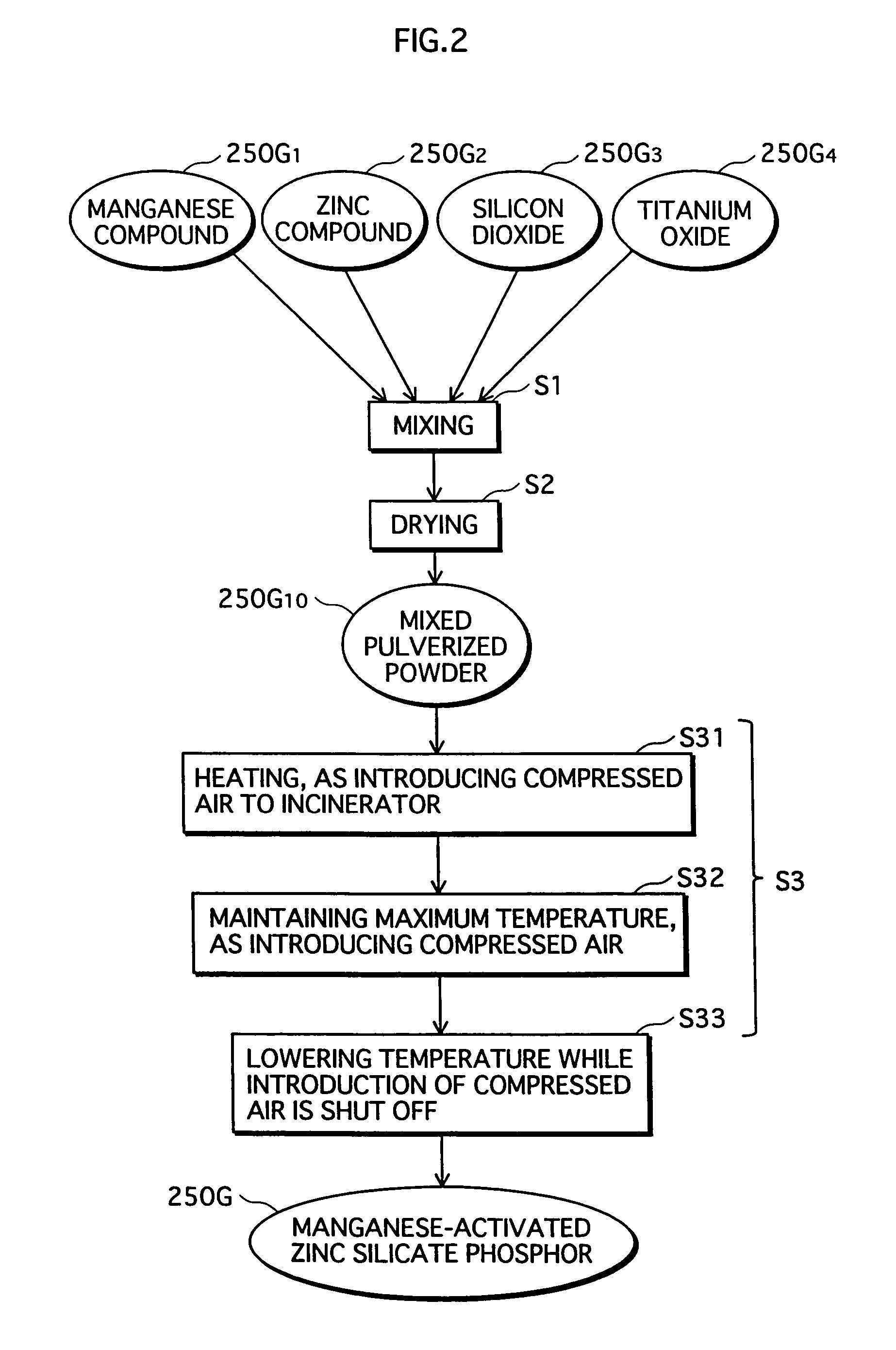Phosphor and plasma display panel using the same
a technology of phosphor and plasma display panel, which is applied in the direction of discharge tube/lamp details, discharge tube luminescnet screens, gas-filled discharge tubes, etc., and can solve the problems of reducing luminous efficiency, difficult for conventional technologies, and component sublimeness
- Summary
- Abstract
- Description
- Claims
- Application Information
AI Technical Summary
Benefits of technology
Problems solved by technology
Method used
Image
Examples
first embodiment
1. First Embodiment
1.1 Structure of PDP 1
[0036]The structure of a PDP 1 according to a first embodiment of the present invention is described with the aid of FIG. 1. FIG. 1 shows a perspective view (partial cross section) by extracting a part of the configuration of the PDP figuration of the PDP 1 according to the present embodiment.
1.1.1 Structure of Front Panel 10
[0037]As shown in FIG. 1, a front panel 10 has multiple pairs of display electrodes 12 disposed parallel to each other on a plane, of a front substrate 11, facing a back panel 20 (i.e. the lower plane in FIG. 1). A dielectric layer 13 and then a protective layer 14 are formed as coatings so as to cover the pairs of display electrodes 12 in the given order. Each pair of the display electrodes 12 is composed of a scan electrode (hereinafter, referred to as “Scn electrode”) 12a and a sustain electrode (hereinafter “Sus electrode”) 12b.
[0038]The front substrate 11 is structured, for example, from a glass having a high strain...
examples 1-8
PRACTICAL EXAMPLES 1-8
[0106]As shown in Table 1, Practical Examples 1-8 were prepared by changing the addition amount of Ti in the range of 0.00005 to 0.02 mol per 1 mol of the phosphor main portion (Zn1.9SiO4Mn0.1). As to Practical Examples 1-8, the surface region Zn—Si ratios in Ratio Estimations I and II were adjusted to “1.0” and “1.2”, respectively.
examples 9-16
PRACTICAL EXAMPLES 9-16
[0107]For Practical Examples 9-16, Zr was added to the phosphor main portion (Zn1.9SiO4Mn0.1). Here, the addition amount of Zr was changed in the range of 0.00005 to 0.02 mol per 1 mol of the phosphor main portion (Zn1.9SiO4Mn0.1), as in the case of the above Practical Examples 1-8. The surface region Zn—Si ratios were the same in Practical Examples 1-8.
[0108]When Zr is added to the phosphor, it is only necessary to use ZrO2 being a source of Zr, in place of TiO2, in the method for manufacturing the G phosphor 250G according to the present embodiment.
PUM
| Property | Measurement | Unit |
|---|---|---|
| temperature | aaaaa | aaaaa |
| thickness | aaaaa | aaaaa |
| thickness | aaaaa | aaaaa |
Abstract
Description
Claims
Application Information
 Login to View More
Login to View More - R&D
- Intellectual Property
- Life Sciences
- Materials
- Tech Scout
- Unparalleled Data Quality
- Higher Quality Content
- 60% Fewer Hallucinations
Browse by: Latest US Patents, China's latest patents, Technical Efficacy Thesaurus, Application Domain, Technology Topic, Popular Technical Reports.
© 2025 PatSnap. All rights reserved.Legal|Privacy policy|Modern Slavery Act Transparency Statement|Sitemap|About US| Contact US: help@patsnap.com



